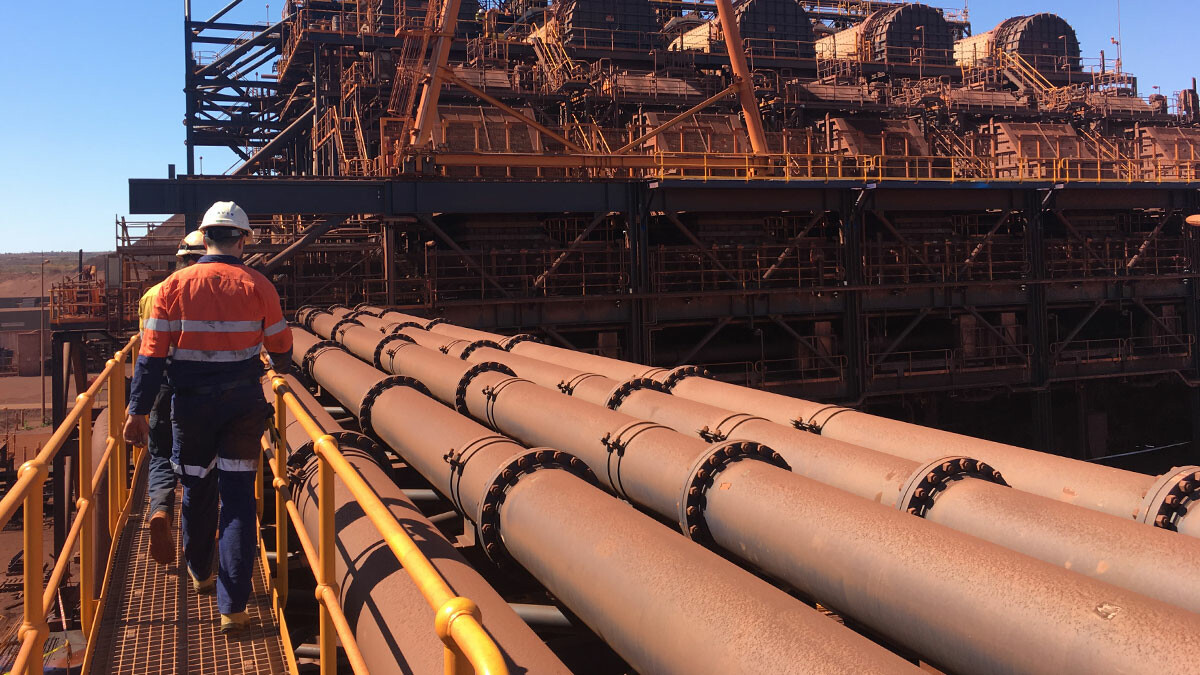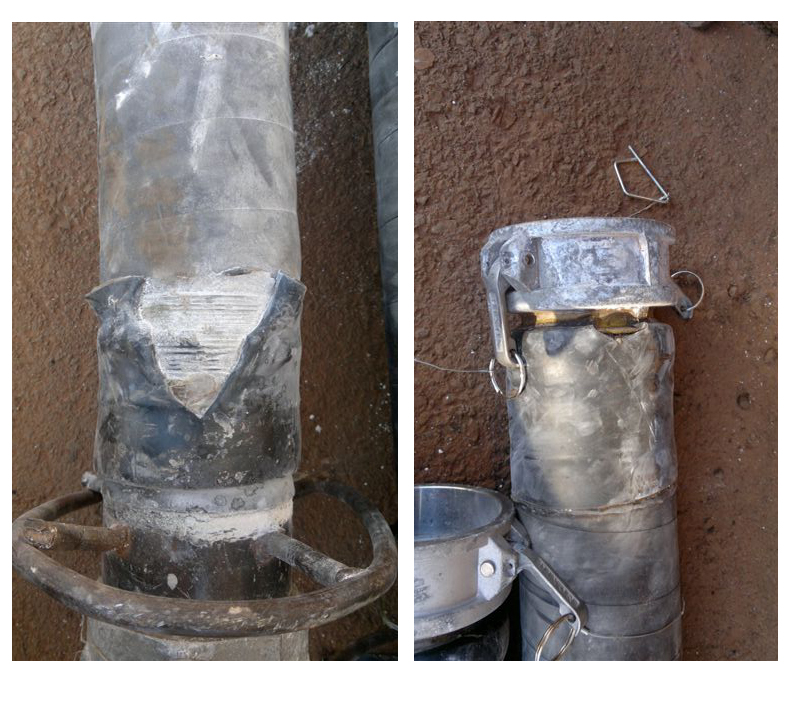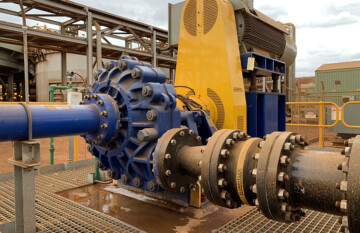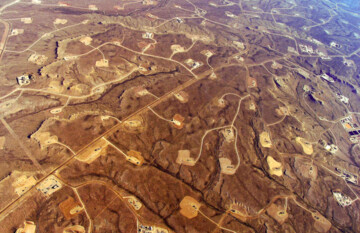We’ve all heard the common saying: “Insanity is doing the same thing over and over and expecting different results.” It’s especially true when it comes to failing slurry piping—when fast-wearing, leaking piping is replaced again and again with the same product.
The key to fixing this problem is understanding the different types of wear. In this article, we cover:
- The four main types of wear
- Real life examples of what to look out for
- Strategies to give you better performance
Abrasive wear
If the slurry in your pipework is low velocity, settling, or has large particles, you’ll be tired of dealing with the effects of abrasive wear.
This sort of wear happens when slurry particles fall out of suspension and grind along the bottom quadrant of the pipe. It results in a sliding or grinding bed.
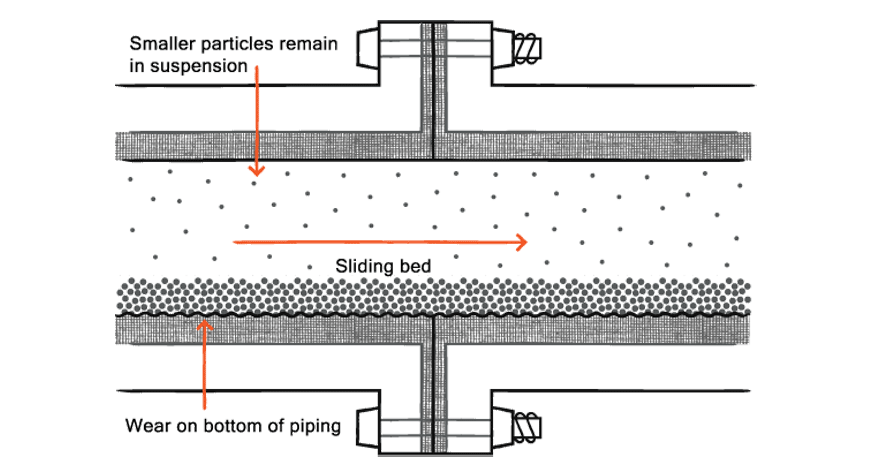
Abrasive wear
Abrasive wear is common in iron ore, mineral sands, and other mineral processing where there’s large particle-size distribution.
It’s also common in dredging lines where there’s uncontrolled particle-size distribution.
This photo shows an example of abrasive wear on rubber-lined pipe.
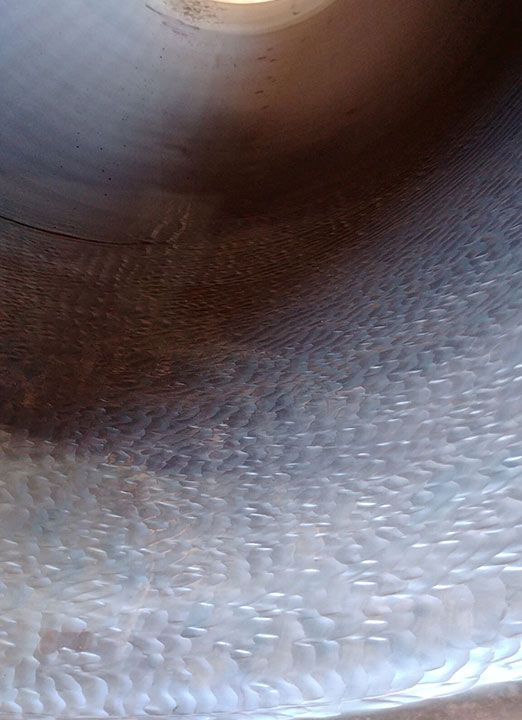
Abrasive wear on rubber-lined pipe
Under a microscope, the pipe interior looks like it was grated with a cheese grater. But to the naked eye it appears as if the liner has worn away.
To reduce abrasive wear, you can ask your pipe manufacturer for a liner with high abrasive wear-resistance, such as polyurethane polymer or ceramic.
Both liners will give you longer wear life, reduce pipe failures, and help you confidently reach scheduled shutdowns.
Erosive wear
Erosive wear happens when slurry particles impact against the interior of the pipe wall.
It’s common around turbulent parts of the system, such as pumps, bends, or tees.
There are two types of erosive wear:
1. Elastic impact
Where particles hit the pipe or hose wall, causing a micro deformation in the liner, then rebound with most of their energy. This type of impact has a low wear rate.

Elastic impact: Temporary micro deformation leads to low wear rate
2. Plastic impact
Where particles hit the pipe or hose wall, causing a cut or tear in the liner, then rebound with a loss of energy. This has a much higher wear rate.

Plastic impact: A cut, tear, or fracture leads to high wear rate
Elastomeric or soft liners (polyurethane and rubber) handle erosive wear better than hard liners (ceramics and welded alloys). This is because they deform and deflect particle impact, whereas hard liners are more likely to experience fractures, particularly with high-velocity particles.
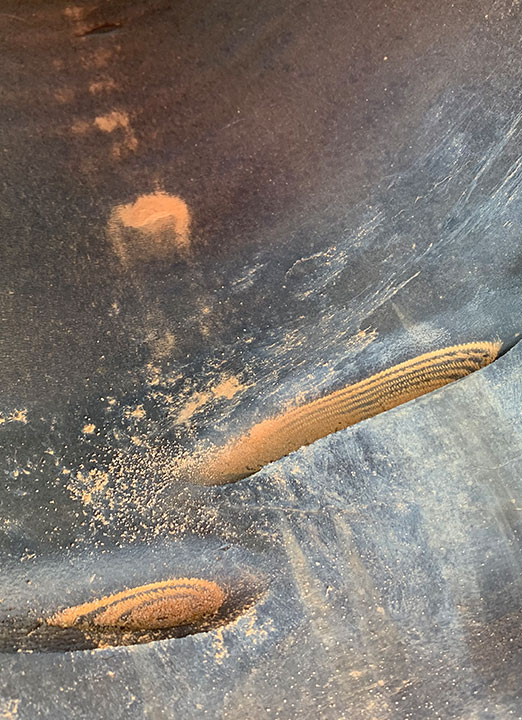
The effects of plastic impact
Corrosive wear
Corrosion in slurry piping happens when dissolved oxygen, floatation, or leaching reagents in the slurry fluid react with the lining or pipe substrate. This chemical reaction degrades the pipe interior, like rust on unlined steel pipe.
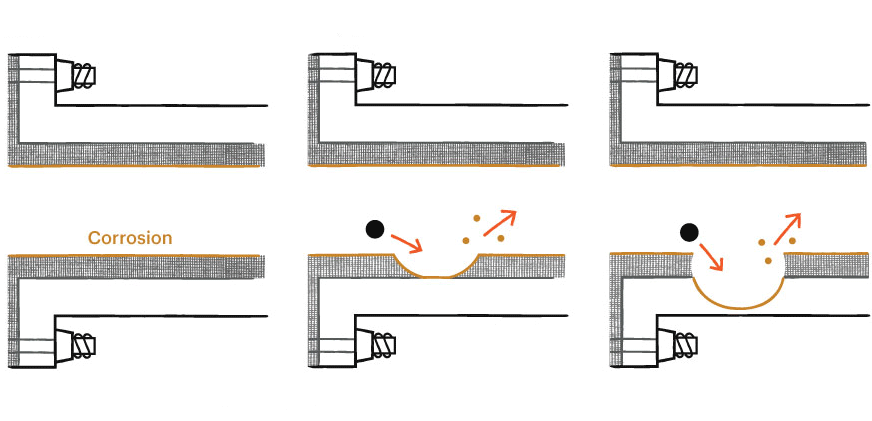
1. Corrosion layer forms on lining.
2. Erosive fluid wears through liner to expose steel pipe.
3. Further erosion of steel pipe leads to leaks and failure.
With rubber liners, corrosion looks like bubbling or flaking, like the photo below of rubber-lined pipe from a lithium plant. This happens because of reagents used in the mineral processing flotation process.
One of the biggest problems with this type of wear is the corrosion-erosion effect, which creates a radically accelerated wear environment. Slurry wipes off the corroded flake or crust and exposes the steel or substrate underneath. This accelerates wear and the speed of pipe failure.
It’s important to match the chemical compatibility of the slurry to your piping system. Unlined steel wears quickly when there’s dissolved oxygen—from centrifugal pumps adding oxygen to the slurry—or from salt ions in process water. Natural rubber liners also wear quickly if there’s hydrocarbons in the slurry.
This photo shows severe corrosion to piping on a bauxite tailings pipeline.
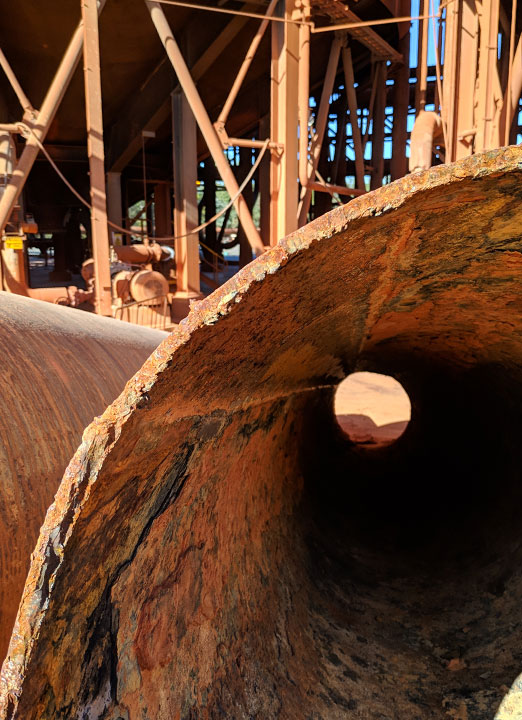
Severe corrosion on bauxite tailings pipeline
If corrosion is causing premature wear in your pipes, consider trialling a less reactive lining like polyurethane polymer or synthetic rubber. It will mean less leaks and unplanned downtime.
Another common corrosion challenge in mineral processing is galvanic corrosion. This happens when two different metals are connected, such as stainless steel with exotic alloy. It’s easily fixed by using a sleeve that acts as a barrier between the two metals, or setting up a cathode system.
Temperature wear
Temperature wear is an easy one for most engineers to control for, particularly if your plant will be running high-temperature or low-temperature slurry.
It’s mainly a problem with elastomeric liners, such as rubber or polyurethane, and some resin liners. These types of liners have a narrower temperature range than ceramics or welded metals.
If they’re used outside their operating temperature, they will degrade, melt or burn, and lose their resistance to wear.
In our experience, liners lose their resistance to wear at operating temperatures above 75°C for natural rubber, and 60°C for standard polyurethane.
These two photos show what happens with hot temperature slurry on natural rubber.
This customer was using natural rubber mining hose to pump hot lime slurry. The slurry was reaching temperatures up to 110°C, which was causing the hose to melt.
They decided to try a mining hose with a custom synthetic rubber lining that could withstand the high temperatures. This simple change has reduced their maintenance costs and improved production.
The same challenge happens with elastomeric liners in very cold temperatures. The liner becomes brittle, cracks, and loses its ability to rebound particles. This makes it less resistant to wear.
Take advantage of wear liner technology
There used to be limited options for dealing with aggressive slurry wear. In the past, plants might have been designed with rubber-lined steel or lower-grade polyurethane-lined pipe.
But now there are more advanced technologies to take advantage of like ceramic-lined mining hose, and high-performance polyurethane liners, which offer distinct advantages.
Wear is a fact of life in slurry piping systems. But understanding the type of wear and how this affects your system will help you make better decisions—and you’ll be much happier with the results.








